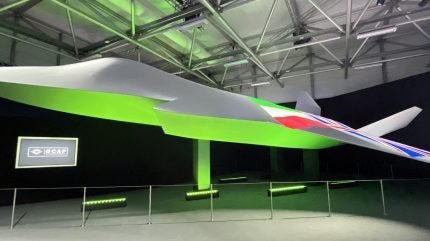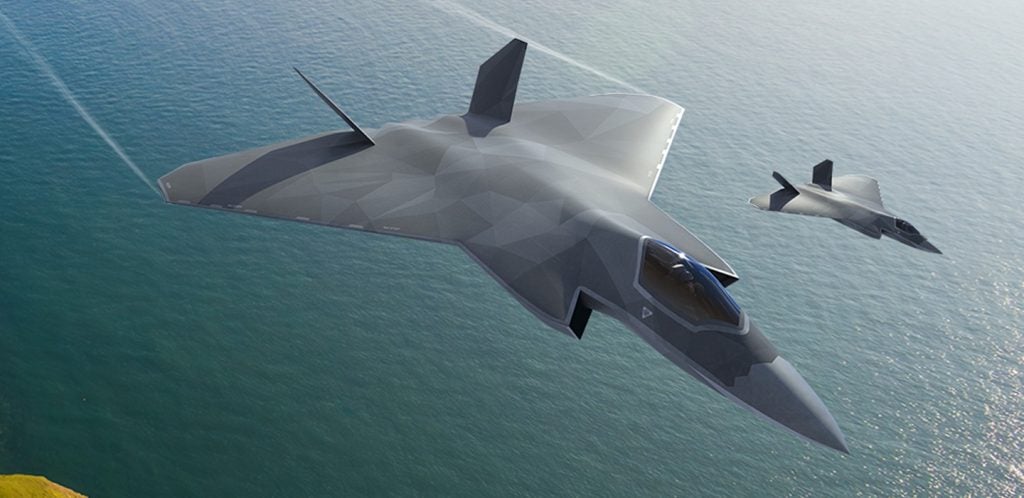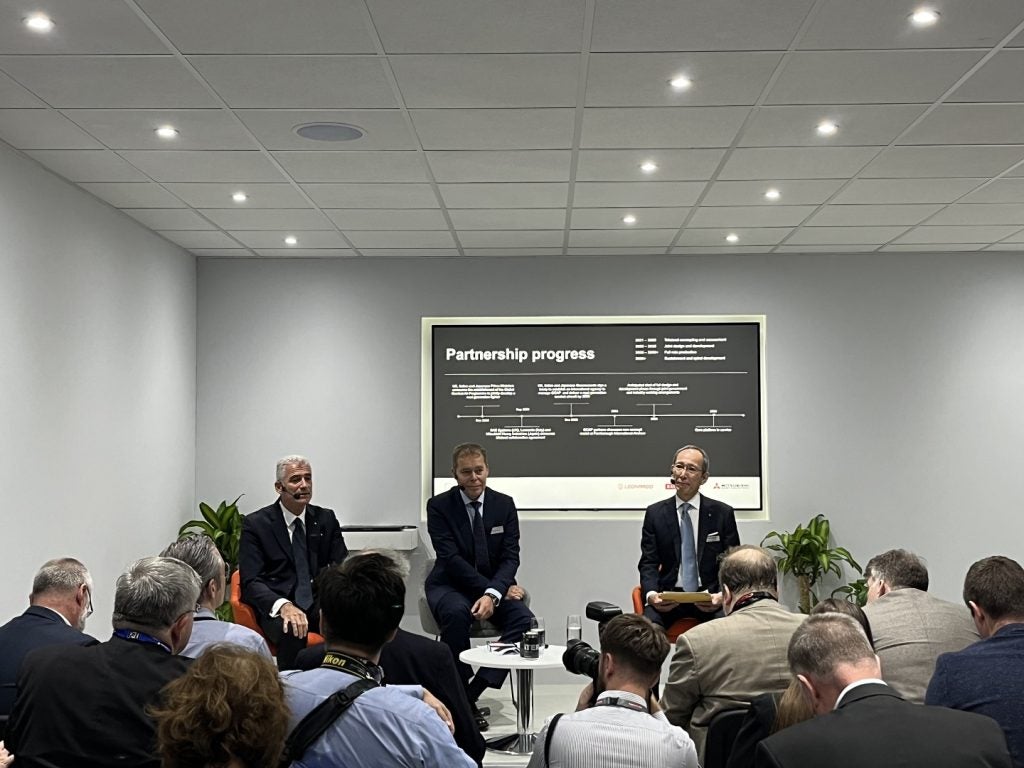
At the Farnborough International Airshow, the Global Combat Air Programme (GCAP) partners from the UK, Italy, and Japan have revealed a concept model of their next-generation combat aircraft.
A blend of international collaboration and technology drives this unveiling.
Unveiling a vision at Farnborough
The GCAP partners have taken a step forward by introducing their new concept model at Farnborough. The aircraft was a product of cooperation between the UK’s BAE Systems, Italy’s Leonardo, and Japan’s Mitsubishi Heavy Industries.
The updated model features a larger wingspan to enhance aerodynamic efficiency. This enhancement is expected to improve the aircraft’s performance, paving the way for its entry into service by 2035.
The Global Combat Air Programme is envisaged to eventually replace aircraft in service with these countries – the Eurofighter Typhoon for Italy and the UK, and the Mitsubishi F-2 in Japan, as highlighted by GlobalData’s intelligence on the Italian defence market.

Strong Government support
The collaboration between BAE Systems, Leonardo, and Mitsubishi Heavy Industries leverages a suite of digital tools, including computer-based modelling and virtual reality, to refine the aircraft’s design. This approach allows for continuous evolution during the concept phase, ensuring that the final product meets the requirements of modern aerial combat.
“In the 18 months since the launch of the Global Combat Air Programme, we’ve been working closely with our industrial partners in Italy and Japan under the collaboration agreement,” stated Herman Claesen, Managing Director of Future Combat Air Systems at BAE Systems. “The new model, unveiled at Farnborough International Airshow, shows notable progress in the design and concepting of this future fighter jet”.
When asked about the risk of the GCAP programme losing support from the UK Government in the face of the upcoming Strategic Defence Review, Herman Claesen stated that Keir Starmer had emphasised and backed the programme’s importance to Herman himself.
“I think the fact that he [Starmer] came out here, wants to see the aircraft, wants to talk to people about it, gives another indication that it is a very key strategic programme to the UK,” Claesan went on to say.
He also stated, “The GCAP programme has had phenomenal pace and has shown phenomenal energy—that pace has continued throughout,” Claesen said during the press conference. I believe we can make an outstanding fighter jet. It is a very important programme for the UK.”
During the press conference, the partnership progress highlighted a timeline of where the programme is heading with the ‘anticipated start of full design and development phase through joint government and industry working arrangements’ by 2025, with ‘full rate production’ from 2035 onwards.

Knowledge exchange among GCAP nations
The GCAP programme is underpinned by the synergy of its international partners. The collaboration between the UK, Italy, and Japan allows for an exchange of knowledge and technology, addressing shared challenges and goals. This approach enhances the aircraft’s technical capabilities and also helps each nation’s industrial sectors.
“The programme is immensely important for Italy, for Leonardo, including our UK-based business, and for wider Italian industry,” said Guglielmo Maviglia, Chief Global Combat Air Programme Officer at Leonardo.
Announced on January 26, 2023, Italian defence firms Leonardo, Elettronica, Avio Aero, and MBDA Italia signed a contract to bolster Italy’s involvement in the Global Combat Air Programme (GCAP).
Hitoshi Shiraishi, Senior Fellow at Mitsubishi Heavy Industries, echoed this sentiment, highlighting the programme’s impacts. “MHI considers any project to be a valuable opportunity to deepen our knowledge. I also hope that this GCAP programme, with the broad participation of Japan’s defence companies, will foster innovation in the country’s industrial sector, such as digital transformation.”
The Global Combat Air Programme (GCAP) alliance, comprising the UK, Italy, and Japan, offers Japan support in modernising its fighter jet fleet amidst economic difficulties. Japan aims to reduce costs and enhance its aerospace capabilities by collaborating on developing next-generation aircraft.
Despite former UK Minister for Defence Procurement James Cartlidge discouraging additional partners from joining the trilateral alliance and warning that new members could delay the programme, all three industry representatives didn’t rule out Saudi Arabia’s inclusion in the GCAP programme when asked about it.
“We are developing an industry construct that is open for other [international manufacturing] partners,” stated Guglielmo Maviglia, chief GCAP programme officer at Leonardo, during today’s press briefing. “Partners are important because of course, the export market is relevant for the business case.”
Preparing for the next phase of development
The programme is expected to employ tens of thousands of skilled workers across the UK, Italy, and Japan, bolstering industrial skills and technologies for the future.
By integrating an intelligent weapons system, a software-driven interactive cockpit, and advanced sensors, the new combat aircraft aims to set a new standard in interoperability, adaptability, and connectivity. Its next-generation radar, capable of processing more data than current systems, hopes to provide a battlefield advantage.
The unveiling at Farnborough demonstrates the programme’s progress as the GCAP partners continue to refine the aircraft’s design and prepare for the next phase of development.
With its timeline and features, the GCAP combat aircraft is poised to become one of the most advanced and capable fighter jets in service.




